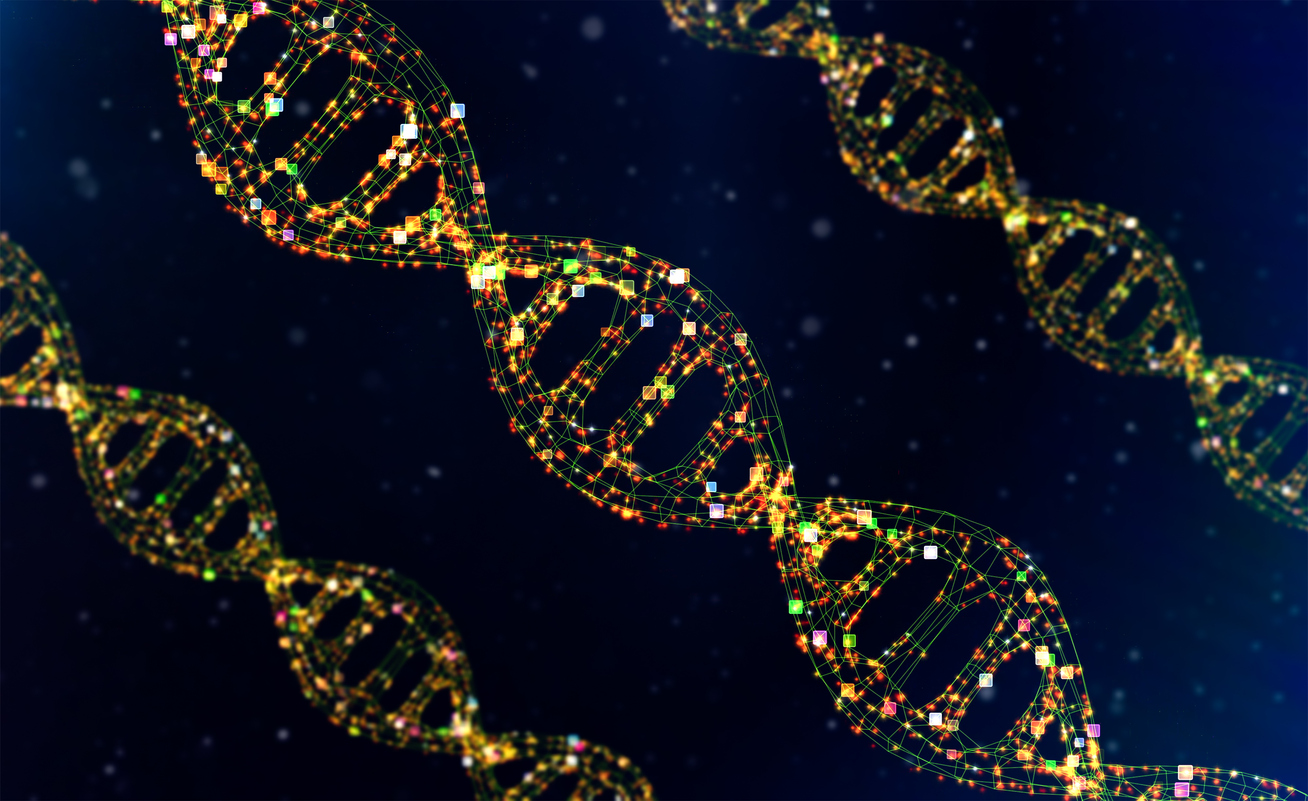2025-09-16
How our cells neutralize toxic RNAs
Pharmacology and Toxicology
By Lila Rouland | Published September 16, 2025 | 3 min read
#ModifiedRNA #ADK #ADAL #CellularToxicity #Metabolism #Purines #AMPK #MetabolicDiseases #Lysosomes #Pharmacology
RNAs undergo more than 170 post-transcriptional modifications. Their degradation generates modified nucleosides, some of which are toxic. This study identifies N6-methyladenosine (m⁶A), N6,N6-dimethyladenosine (m⁶,⁶A), and isopentenyladenosine (i⁶A) as particularly cytotoxic. A conserved metabolic mechanism involving adenosine kinase (ADK) and adenosine deaminase-like (ADAL) transforms these nucleosides into inosine monophosphate (IMP). Inactivation of this pathway leads to severe cellular toxicity, glucose intolerance, and lysosomal dysfunction.
Tests in 14 human cell lines showed that m⁶A, m⁶,⁶A, and i⁶A significantly reduce cell viability in a dose-dependent manner. Injected into mice, these nucleosides are rapidly metabolized, without plasma or urinary accumulation, pointing to enzymatic detoxification rather than excretion.
High-throughput screening identified ADK as the key enzyme phosphorylating m⁶A, m⁶,⁶A, and i⁶A. Deletion of ADK caused toxic accumulation of these nucleosides and postnatal lethality in mice. In vitro, ADK efficiently phosphorylated these substrates into m⁶AMP, m⁶,⁶AMP, and i⁶AMP, with catalytic activity comparable to unmodified adenosine.
ADAL then deaminates these modified nucleotides into IMP, a harmless metabolite reintegrated into purine biosynthesis. In ADAL-KO cells and mice, modified AMP species accumulate, though levels of native IMP and AMP remain stable, suggesting compensatory mechanisms. Molecular modeling shows ADAL’s strict specificity for modified substrates through its catalytic DD motif and conserved hydrophobic fold.
Modified AMPs allosterically inhibit AMPK, a master regulator of glucose metabolism. Adal-KO mice showed glucose intolerance, reduced fasting AMPK activation, and downregulation of carbohydrate metabolism genes. Docking simulations confirmed that these nucleotides bind at AMPK’s CBS3 site, blocking native AMP activation.
Human ADK mutations (e.g., G13E, D218A), associated with hepatic and neurological disorders, abolish enzymatic activity for modified substrates. ADK-deficient mice display reduced lipogenic enzymes (FASN, SCD1), induction of autophagy, and decreased fatty acid uptake. Contrary to earlier hypotheses, these effects do not depend on methionine metabolism.
Biotinylated adenosine interactome analysis revealed binding to lysosomal proteins, particularly ATP6V1A, a subunit essential for lysosomal acidification. Accumulation of modified nucleosides disrupts this localization, reduces ATPase activity, raises lysosomal pH, and triggers lysosomal cell death (LCD). The lysosomal membrane stabilizer quinacrine restored lysosomal and lipid functions, confirming this mechanism of toxicity.
This work uncovers a new biosynthetic pathway for IMP from modified RNAs, linking epitranscriptome biology to energy metabolism. The ADK–ADAL axis acts as an essential detoxification system. Its dysfunction is implicated in diabetes, lipid disorders, and hepatic and neurological diseases. These findings open therapeutic avenues targeting purine metabolism imbalances.
About the author – Lila Rouland
With dual expertise in science and marketing, Lila brings her knowledge to the service of healthcare innovation. After five years in international academic research, she transitioned into medical and scientific communication within the pharmaceutical industry. Now working as a medical writer and content developer, she is committed to highlighting scientific knowledge and conveying it to healthcare professionals with clarity and relevance.
#ModifiedRNA #ADK #ADAL #CellularToxicity #Metabolism #Purines #AMPK #MetabolicDiseases #Lysosomes #Pharmacology
RNAs undergo more than 170 post-transcriptional modifications. Their degradation generates modified nucleosides, some of which are toxic. This study identifies N6-methyladenosine (m⁶A), N6,N6-dimethyladenosine (m⁶,⁶A), and isopentenyladenosine (i⁶A) as particularly cytotoxic. A conserved metabolic mechanism involving adenosine kinase (ADK) and adenosine deaminase-like (ADAL) transforms these nucleosides into inosine monophosphate (IMP). Inactivation of this pathway leads to severe cellular toxicity, glucose intolerance, and lysosomal dysfunction.
Fast detox: how cells clear threatening adenosines
Tests in 14 human cell lines showed that m⁶A, m⁶,⁶A, and i⁶A significantly reduce cell viability in a dose-dependent manner. Injected into mice, these nucleosides are rapidly metabolized, without plasma or urinary accumulation, pointing to enzymatic detoxification rather than excretion.
When RNA turns toxic, ADK steps in
High-throughput screening identified ADK as the key enzyme phosphorylating m⁶A, m⁶,⁶A, and i⁶A. Deletion of ADK caused toxic accumulation of these nucleosides and postnatal lethality in mice. In vitro, ADK efficiently phosphorylated these substrates into m⁶AMP, m⁶,⁶AMP, and i⁶AMP, with catalytic activity comparable to unmodified adenosine.
RNA detox: ADAL turns danger into useful metabolites
ADAL then deaminates these modified nucleotides into IMP, a harmless metabolite reintegrated into purine biosynthesis. In ADAL-KO cells and mice, modified AMP species accumulate, though levels of native IMP and AMP remain stable, suggesting compensatory mechanisms. Molecular modeling shows ADAL’s strict specificity for modified substrates through its catalytic DD motif and conserved hydrophobic fold.
When modified RNAs disrupt blood sugar
Modified AMPs allosterically inhibit AMPK, a master regulator of glucose metabolism. Adal-KO mice showed glucose intolerance, reduced fasting AMPK activation, and downregulation of carbohydrate metabolism genes. Docking simulations confirmed that these nucleotides bind at AMPK’s CBS3 site, blocking native AMP activation.
When ADK falters, lipid metabolism collapses
Human ADK mutations (e.g., G13E, D218A), associated with hepatic and neurological disorders, abolish enzymatic activity for modified substrates. ADK-deficient mice display reduced lipogenic enzymes (FASN, SCD1), induction of autophagy, and decreased fatty acid uptake. Contrary to earlier hypotheses, these effects do not depend on methionine metabolism.
Lysosomes: first victims of toxic RNAs
Biotinylated adenosine interactome analysis revealed binding to lysosomal proteins, particularly ATP6V1A, a subunit essential for lysosomal acidification. Accumulation of modified nucleosides disrupts this localization, reduces ATPase activity, raises lysosomal pH, and triggers lysosomal cell death (LCD). The lysosomal membrane stabilizer quinacrine restored lysosomal and lipid functions, confirming this mechanism of toxicity.
An ancestral metabolic pathway with major clinical implications
This work uncovers a new biosynthetic pathway for IMP from modified RNAs, linking epitranscriptome biology to energy metabolism. The ADK–ADAL axis acts as an essential detoxification system. Its dysfunction is implicated in diabetes, lipid disorders, and hepatic and neurological diseases. These findings open therapeutic avenues targeting purine metabolism imbalances.
Read next: CDK6 inhibits de novo lipogenesis in white adipose tissue but not in the liver
About the author – Lila Rouland
Doctor of Oncology, specialized in Biotechnology and Management

Last press reviews
Turner syndrome and autoimmunity: an underestimated association?

By Ana Espino | Published on December 8, 2025 | 3 min read<br>
Could cinnamon become a natural treatment for metabolic syndrome?

By Lila Rouland | Published on December 5, 2025 | 3 min read<br><br>...
Who is afraid of Christmas? Do holidays trigger psychiatric crises?

By Carolina Lima | Published on Décember 4, 2025 | 3 min read